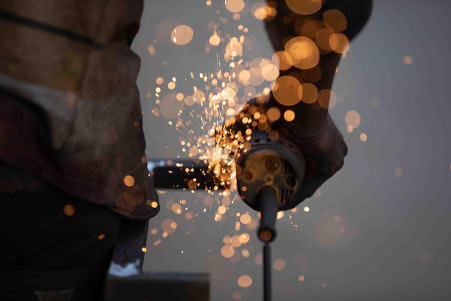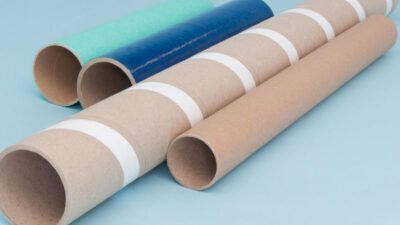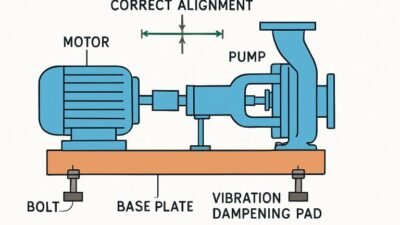Almost all industries rely on metal fabrication. It plays a crucial role in the manufacturing and production of a wide range of goods used in construction, the automotive industry, aerospace and even healthcare. Metal fabrication involves shaping and forming metal to create everything from small components to large structures.
That said, have you ever wondered about how metal fabrication is done? Let’s discuss the basics.
Three basic metal fabrication techniques
Metal fabrication relies on three primary techniques that serve as the foundation for nearly every project. These include:
· Cutting: This is the initial step where metal fabricators slice metal into specific shapes and sizes. Depending on the material and the required precision, they employ various methods, including sawing, shearing, laser or plasma cutting.
· Bending: After cutting, the metal pieces are bent or shaped using press brakes, roll formers or other specialized equipment to achieve the desired angles, curves or forms.
· Assembling or joining: The final stage involves joining the cut and formed metal components together. This is done through welding, bolting, riveting or any other method.
Materials used in metal fabrication
The type of metal to use depends on the function of the final product. Different metals have varying degrees of strength, durability, conductivity and corrosion resistance. They also have unique properties that affect how they are cut, formed, joined and finished. Some of the most common metals used in metal fabrication include:
· Steel: Steel is the most widely used metal in fabrication. It’s used in construction, automotive parts, machinery and tools. Types of steel include:
o Carbon steel – Strong, affordable and easy to work with. Widely used in construction and general manufacturing.
o Stainless steel – Resists corrosion and has an attractive finish. Stainless steel is mostly used for kitchen equipment, medical tools and architecture.
· Aluminum: Aluminum is lightweight and corrosion-resistant. It’s commonly used in aerospace, transportation and consumer electronics.
· Copper: Copper is known for excellent electrical conductivity, malleability and resistance to corrosion. It’s often used in electrical wiring and plumbing.
· Brass: Brass is an alloy of copper and zinc known for its machinability, low coefficient of friction, corrosion resistance and aesthetic appeal.
· Magnesium: This metal is lightweight, has a good strength-to-weight ratio and is corrosion-resistant. It’s used in the aerospace and automotive industries.
Steps in a metal fabrication process
Fabrication isn’t just a technical task. It’s a coordinated process with defined stages. Here are the steps followed in a metal fabrication process, according to the experienced metal fabrication experts at Richards.
1. Design and planning
Before the actual fabrication work begins, designers and engineers will discuss the project goals and needs with the client. Once in agreement, engineers create 2D and 3D models using Computer-Aided Design (CAD) software, defining dimensions, tolerances and materials. In advanced operations, this data feeds directly into Computer-Aided Manufacturing (CAM) systems that control the machines.
2. Material selection and preparation
Raw materials (like sheets, rods or tubes) are ordered to spec. They may require surface cleaning, leveling or trimming before fabrication can begin.
3. Cutting and shaping
Based on the digital designs, metal is cut into precise parts. This can involve multiple methods, such as:
· Laser cutting: This method uses a focused laser beam to melt, burn or vaporize the metal, allowing for precise and intricate cuts.
· Water jet cutting: This technique employs a high-pressure stream of water, sometimes mixed with abrasive materials, to cut through metal.
· Plasma cutting: This process utilizes a constricted jet of ionized gas (plasma) to melt and cut through electrically conductive metals.
4. Bending and forming
Next, the parts are shaped into their final geometry. This may include multiple bends, curves or forms, especially in enclosures, brackets or structural components.
5. Machining (if needed)
Some parts require additional detailing, such as drilled holes, tapped threads or milled edges. CNC machining comes into play here for ultra-precise work, especially in tooling or aerospace parts.
6. Joining and assembly
Welders and assemblers bring everything together. Depending on the product, this may be a quick weld or a complex multi-step assembly using jigs and fixtures.
7. Finishing
The product is cleaned, coated, polished or treated to enhance its appearance, protect it from corrosion or improve performance. We’ll cover this in detail next.
8. Inspection and quality control
Every part is carefully measured, thoroughly tested and meticulously inspected. Tolerances are checked, and welds are examined. Nothing moves forward unless it meets spec.
9. Packaging and delivery
The final products are cleaned, packed and shipped to the customer or installation site.
Common methods of metal finishing?
Finishing transforms raw metal into a usable product. It can protect against rust, improve appearance or prepare the part for painting. There are various metal finishing methods, each with its own trade-offs in terms of cost, durability and appearance.
· Powder coating applies a dry powder that’s baked into a durable shell.
· Galvanizing dips steel into molten zinc to prevent rust. It’s perfect for outdoor structures.
· Anodizing electrochemically strengthens aluminum and gives it bright colors.
· Plating adds a layer of another metal, like chrome or nickel, for both looks and durability.
· Brushing and polishing enhance aesthetics, especially for stainless steel fixtures.
· Passivation chemically removes impurities from stainless steel to boost its corrosion resistance.
Key concepts in metal fabrication
If you are new to metal fabrication, some of the terms used can be confusing. Here are a few essential terms you should know:
· Tolerance: The allowed margin of error in size or fit. Tighter tolerances = more precision = higher cost.
· CNC (Computer Numerical Control): Machines that follow computer instructions to cut, bend or shape metal precisely.
· CAD/CAM: Software that bridges design and manufacturing, enabling seamless digital workflows.
· Alloy: A mix of metals created to achieve specific properties (e.g., strength, conductivity).
· Sheet vs. plate metal: The sheet is thinner and more flexible, while the plate is thicker and more rigid.
Industries that rely on metal fabrication
Metal fabrication is critical to just about every sector of the economy. If something has a metal part, it was likely fabricated. Here are examples of how it applies to different industries:
· Construction: Structural steel, HVAC ducts, roofing and staircases.
· Automotive: Frames, body panels, exhaust systems, brackets and engine components.
· Aerospace: Lightweight, precision-crafted parts for wings, fuselages and landing gear.
· Medical: Surgical instruments, hospital beds, frames and diagnostic equipment.
· Energy: Pipelines, wind turbine structures, electrical enclosures and refinery components.
· Consumer goods: Appliances, electronics enclosures, furniture, kitchen products.
Bottom line
Metal fabrication is a highly technical, creative and critical process that fuels innovation and industry. If you’re looking for a trusted partner in high-quality metal fabrication, Richard’s Fabrication delivers precision, durability and custom solutions backed by decades of experience. Their team is ready to bring your project to life, whether you need a single prototype or full-scale production.



